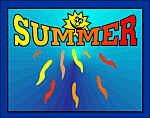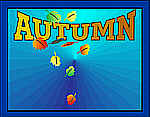|

Winter Barnyard
Hints for the Farm

|
In The Barn
Heated Buckets -
To keep from chipping that ice away every day, use the insulated heated buckets.
Flat on one side, they hang nicely and keep the water from freezing. Electric cord
exits from the bottom of pail and is wrapped with wire
to prevent chewing.
Barn Openings -
Cover the doors or openings with plastic strips to help keep out the cold and wind.
Llamas will learn to walk through the strips.
Infrared Heaters -
Dangerous !! Use with extreme caution. Barns have burned to the ground due to a
faulty or improperly hung infrared lamp. If one gets knocked down, it can burn a
hole in the flooring or start a fire. If using, be sure to wire or nail the lamp securely
in place so it cannot get knocked down. Do not use this lamp in a pen where
animals are different sizes. The taller ones can get noses and ears burned and the
smaller animals are not close enough to benefit from the warmth.
Radiator Heater -
A DeLonghi oil filled radiator heater can be purchased at stores like K-Mart &
WalMart. Thermostat controlled, kid safe, and never too hot to touch. If used in a
stall size area with a ceiling lower than the barn roof, it will keep the area warm and
toasty - and safe.
Floating Tank Heaters -
Floating tank deicers will keep your water from freezing. About $25.00. For safety,
never use a tank heater with the element in the water unless you have it connected
to a GFI outlet.
Cria Cozy -
Line the outside of your creep feeder, or even create a small, three-sided area, with
straw bales to create a small, draft free area for crias to cozy up in.
Fire Safety -
Install a fire detector in the barn and also keep
filled fire extinguishers handy.
Never completely close animals in the barn. Leave a
door open just wide enough
for escape in case of fire.
Safe Insulation -
If installing any board insulation for winter, use only solid styrene foam panels. If
in an area where animals might chew, the white bead foam board is dangerous. The
beads will collect in the animal's systems and interfere with the digestive system.
Holiday Hazards -
Holly, mistletoe, and poinsettias are extremely
poisonous. The Ponderosa Pine is
poisonous to llamas also.
Keep them away from all your animals and pets.
Some llama owners give their llamas a treat of a pile of Christmas trees after the
holidays. Although they like them, it has been suggested that ingested pine needles
can puncture your animal's intestines. Might be worth looking into. Why take a
chance when your llamas don't need this addition to their normal, healthy diet?
Llama Care
Foot Rot
-
The abundance of wet and mud in the winter can cause a fungus in the animal's
pads. The pad looks as if it's "eating away". A piece of carpet soaked with a diluted
bleach mixture, placed by the barn entrance or an area that they walk through
often, will help to prevent these fungus from getting started.
that
Instant Cria Coats -
Take a child's sweater or coat and put the cria's front legs in the
arms. Button or
zipper it up on the cria's back.
Emergency Cria Warming -
Place the cria in a plastic trash bag (with the head sticking out of course), and then
place the cria in a tub of warm water. No heat loss due to the wet wool and no need
to dry the cria afterwards. This is one of the fastest ways to get the temperature up.
Photos
Cria Warmer -
(My favorite hint!) Get a cardboard box and cut the top flaps off. Now cut out a
"door" in one end - like a doghouse opening. Cut a round hole 3-4 inches in
diameter either in the top or the top end opposite the door-like opening. Kush the
cria and place the "cria warmer" over him with his head out the door-like opening.
Put a hair dryer nozzle through the round hole and turn it on. Point the dryer so
that it isn't blowing directly on the cria. This will create a cozy oven-like warmer
and surround the cria with warm air. You can even place the cria on a heating pad
while in this box for added warmth - just don't turn it up too hot! Keep your "cria
warmer" on hand for that unexpected cold day that llama mama presents you with
a cria or especially for a premature born cria.
Cria's Temperature -
Remember to check and get the newborn cria's temperature up to normal before
trying to get any food into him. The cria cannot absorb the colostrum if his body
temperature is below normal.
In The Barnyard
Layer, Layer, Layer -
Dress for the weather!
Layer, layer, layer your clothing! The layer next to the skin
must not hold moisture.
Wear a hat - most of the heat loss occurs through the top
of your head.
Feet -
- Electric socks that strap to your leg or boot (D batteries needed).
- Sorrel boots which have heavy felt liners and rubberized outer shells. Be sure to get them large enough to fit two heavy pairs of socks underneath. Various models of Sorrel's are rated for different temperatures. (Sorrel boots get lots of votes)
- Use polar fleece socks along with a wool sock and warm boot.
- "Space Socks" - those with the silver metal threads in them worn under wool socks.
- Wear wool - cotton absorbs moisture holding it next to the skin.
Hands -
- Gloves made with thinsulate
- Polar fleece gloves
- "Space Gloves" - those with the silver metal threads in them worn under heavy gloves
- Good ski gloves really do the job.
- Wear knitted or "space gloves" under leather work gloves.
- Mittens are warmer since your fingers share the warmth, but they are not easy to work in.
In The Pastures
-
Eating Tree Bark -
During this season when pastures are barren, llamas sometime resort to chewing the
bark on the trees which will eventually kill the tree. Mix up a "poop tea" and spray
it on the bark. Most of the time, llamas will not eat where they pick up this scent.
Recipe: Collect several scoops of llama pellets and soak in several gallons of water
(put pellets in a cheesecloth bag, if desired). Brew for several hours. Strain the
liquid into a sprayer and spray the areas you don't want the llamas to eat. Re-apply
as necessary. Note: Label the sprayer!
-
Reseeding The Pastures -
February is a good time to seed the pastures .... right on top of the snow. The
freezing and thawing of the ground works the seed in and it's ready to come up
when the weather warms.
|

Laws Of Farming
How come........?
When you're in a hurry, the gas tank
on the pickup is always on empty!

|
 Return To
Barnyard Hints Or.... Return To
Barnyard Hints Or....

Spring On
The Farm |

Summer On
The Farm |

Autumn On
The Farm |

Winter On
The Farm |
|
Back to Home Page

Thank you for visiting Hamilton Co. Llamas,
Inc. Please don't hesitate
to leave a message if you have any questions or comments.
© 1996- 2018 Shagbark Ridge Llamas
|
|
|

